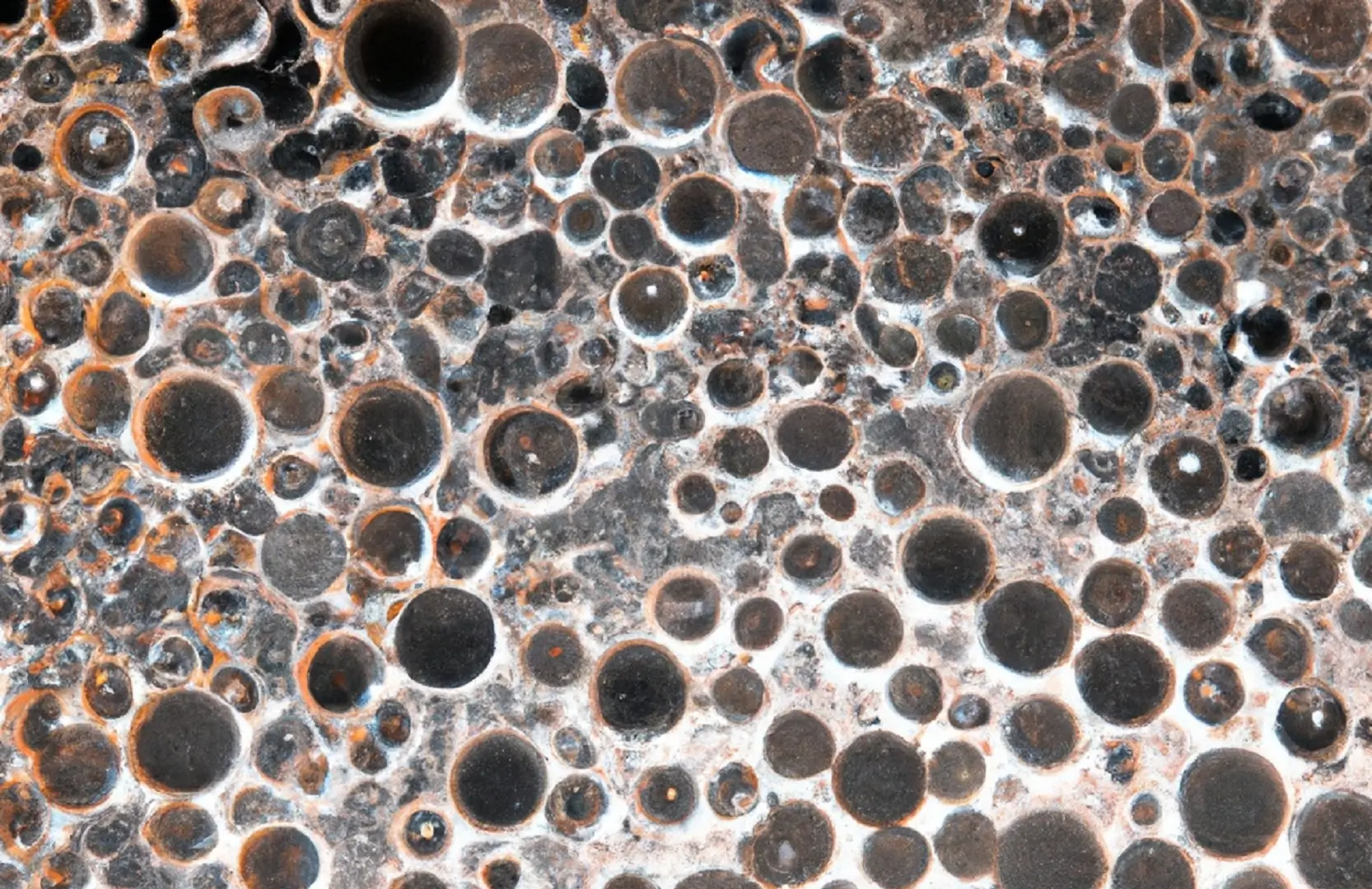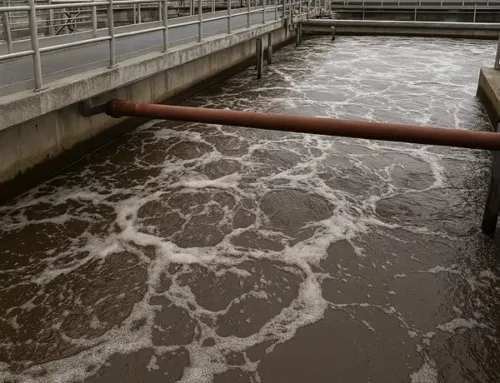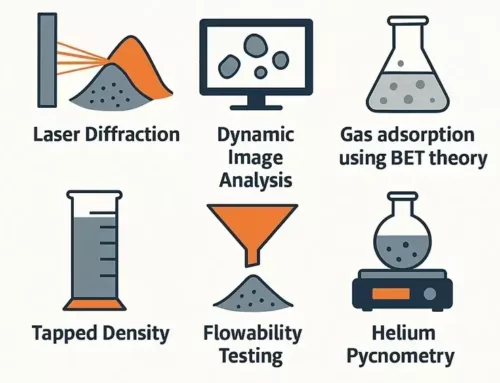
This article will breakdown nanoparticles’ impact and benefits on human health and the environment. Nanoparticles, typically less than 100 nanometers in size, are more common than many realize. They appear in a wide range of everyday products. For instance, you can find nanoparticle materials in cosmetics, skincare, and sunscreens. Additionally, they are present in fabrics, eyeglasses, computer hardware, lenses, and displays.
Nanoparticles also enhance window films, nanoscale sensors, polymer composites, and sports equipment. They improve bicycle frames, helmets, machine parts, degreasers, luggage, and device housings. Furthermore, storage tanks, coatings, cellulose nanomaterials, and tires benefit from nanotechnology.
Construction materials, packaging, and food containers also utilize nanoparticles. They improve food additives, bio-energy, and healthcare products. In the automotive and aerospace sectors, nanoparticles advance batteries, solar panels, and fuel cells. They also enhance fuel additives, sensors, ceramic coatings, and lubricants.
Applications extend to catalysis, stain removers, air purifiers, and antibacterial cleansers. Nanoparticles are used in paints, contrast agents, sealants, and even 3D printing. Semiconductor nanocrystals and quantum qubits also rely on nanotechnology.
With technology and software rapidly advancing, nanotechnology will soon become a part of everyday life. As tolerances in semiconductors, microchips, and electronic components grow tighter, nanomaterials will play a crucial role. For example, they are essential for creating qubits, the building blocks of quantum computing. Additionally, they support new mechanical and electronic components needed for emerging technologies.
Nanoparticles the basics
Nanoparticles are made from various materials, including metals, ceramics, polymers, and biological molecules. They can be naturally occurring, formed through processes like volcanic activity and erosion, or anthropogenic, created by human activities.
Typically ranging from 1 to 100 nanometers in size, nanoparticles exhibit unique properties due to their high surface-to-volume ratio. These include enhanced optical, magnetic, chemical, and mechanical features compared to larger particles of the same material.
Classified as zero-dimensional nanomaterials, all dimensions of nanoparticles fall within the nanoscale, unlike one-dimensional (e.g., nanowires) or two-dimensional (e.g., films) materials, which have larger dimensions. This distinct behavior makes nanoparticles valuable for technological advancements.
However, concerns about environmental and health impacts remain. Scientists are studying nanoparticle toxicology and developing methods to monitor their presence and effects to ensure safety and sustainability.
Nanoparticle impact and benefits: Environmental Concerns
Over the past century, the world population has grown from 2 billion in 1920 to over 8 billion in 2023. This rapid increase has contributed to global deforestation, habitat destruction, species extinction, and potential climate change—all having profound effects on our planet. Maintaining a delicate balance between technological advancements and environmental preservation is crucial for the well-being of humans, animals, plants, and ecosystems.
As populations and industries expand, they inevitably impact global ecosystems. Pollution of land, water, and air introduces toxins and waste into food chains, threatening the sustainability of life. Therefore, it is vital to carefully assess new technologies, like nanoparticles. We must understand their potential environmental impacts, whether detrimental or beneficial, to ensure they contribute positively to our planet’s health and the future of all living organisms.
Nanoparticles and the Environment
In the late 1980s, nanoparticle technologies began advancing rapidly, leading to their widespread use in various industries and improving production methods and everyday consumer products. However, as nanomaterials’ potential continues to be realized, negative consequences—often termed nano pollution—are becoming evident. Human activities have disrupted the natural cycle of nano-sized particles in the Earth’s biogeochemical systems, introducing anthropogenic materials into the environment.
This disruption has led to increased emissions of anthropogenic nanoparticles into the atmosphere, soils, and bodies of water, including seas, lakes, and rivers. These foreign nanoparticles can attach to naturally occurring particles, embedding themselves in ecosystems. Due to their tiny size, detecting and controlling the environmental impact of these nanomaterials poses significant challenges.
It’s important to recognize that most nanoparticles in the environment are naturally occurring, such as volcanic ash and desert dust. Nevertheless, human activities contribute significantly to nanoparticle emissions. These emissions stem from combustion sources like vehicles, aircraft, power plants, and industrial processes, as well as from construction and mining dust, engineered nanoparticles from consumer products, and agricultural inputs like pesticides and fertilizers. Understanding and managing these emissions are crucial for minimizing environmental harm and safeguarding ecosystems.
Nanoparticle impact and benefits on Human Biology
Nanoparticle’s interaction with Human Biology
Nanoparticles can enter the body and interact directly with tissues and cells. However, the ways they interact with living tissues are not yet fully understood. The complexity arises from nanoparticles’ ability to bind with biological materials and alter their surface properties based on their surroundings. Biomedical applications of nanotubes include materials like silicon dioxide, boron nitride, titanium dioxide, organic nanotubes, and the widely used carbon nanotubes.
Challenges in Understanding Nanoparticle Risks
dentifying the risks associated with nanoparticles is complex and not straightforward. Intracellular mechanisms and pathways are challenging to understand, as nanoparticle interactions can change surface morphology and characteristics depending on environmental factors and other particles. Nanoparticles can impact human health by entering cells and interfering with normal cell functions, potentially leading to cell death or dysfunction. They can also interact with DNA, possibly causing genetic mutations, cancer, or inflammatory diseases.
Inflammation triggered by nanoparticles may lead to tissue damage, heart disease, diabetes, or immune system responses. Inhaled nanoparticles can accumulate in the lungs, causing inflammation, asthma, lung damage, or chronic pulmonary disease. For example, some studies suggest that high levels of inhaled titanium dioxide dust may increase lung cancer risk. Topically applied nanoparticles, such as those in sunscreen or cosmetics, can penetrate the skin, causing irritation, allergies, or other skin conditions.
Factors Influencing Nanoparticle Toxicity
The toxicity of nanoparticles depends on various factors, including particle size, morphology, chemical composition, exposure duration, and an individual’s immune response. These factors make it clear that more research is needed to fully understand biological interactions and safely implement nanomaterials in healthcare. Understanding these complexities will be crucial for the responsible and beneficial integration of nanotechnology into medicine and other fields.
Potential Health Risks of Nanoparticles
Identifying the risks associated with nanoparticles is complex and not straightforward. Intracellular mechanisms and pathways are challenging to understand, as nanoparticle interactions can change surface morphology and characteristics depending on environmental factors and other particles. Nanoparticles can impact human health by entering cells and interfering with normal cell functions, potentially leading to cell death or dysfunction. They can also interact with DNA, possibly causing genetic mutations, cancer, or inflammatory diseases.
Inflammation triggered by nanoparticles may lead to tissue damage, heart disease, diabetes, or immune system responses. Inhaled nanoparticles can accumulate in the lungs, causing inflammation, asthma, lung damage, or chronic pulmonary disease. For example, some studies suggest that high levels of inhaled titanium dioxide dust may increase lung cancer risk. Topically applied nanoparticles, such as those in sunscreen or cosmetics, can penetrate the skin, causing irritation, allergies, or other skin conditions.
Agricultural Impact of Nanoparticles
Nanoparticles offer promising benefits in agriculture, such as increasing crop yields by acting as efficient pesticides and delivering fertilizers more precisely. They can also enhance plant growth and improve food safety by protecting crops from bacteria.
However, there are significant risks. Environmental contamination from nanoparticles can harm ecosystems, and human exposure during agricultural work poses health concerns. Additionally, unintended consequences, like pest resistance, may lead to the need for stronger pesticides.
While early research shows nanoparticles like silver and zinc oxide are effective against plant pathogens, more studies are needed to understand long-term impacts. Concerns include nanoparticles leaching into water and soil, affecting both the environment and human health. Global efforts are underway to establish guidelines to ensure safe and responsible use, balancing Nanoparticles’ Impact and benefits with awareness of potential risks.
Nanoparticle Regulations and Standards
Formulating effective regulations for nanoparticles is essential due to their unique properties, which can pose potential risks to human health and the environment. The European Union (EU) has implemented regulations to ensure that products containing nanoparticles are safe for use and that workers handling them are adequately protected. These regulations also aim to safeguard the environment from harmful effects, such as soil and water contamination and damage to ecosystems.
Transparency is a crucial component of these regulations, providing consumers and stakeholders with necessary information about the risks and benefits of products containing nanoparticles. This transparency enables more informed decisions and fosters public trust. Additionally, regulations support innovation by creating a level playing field for companies developing and using nanomaterials, ensuring that new products are brought to market responsibly and sustainably.
The Need for Global Harmonization
Given the varying regulations across countries, global harmonization is vital. Inconsistent standards can create trade barriers and complicate international operations for companies. Harmonized regulations provide a common framework for safe nanoparticle use, facilitate international trade, and promote global sustainability.
Key EU Regulations for Nanoparticles
- REACH (Registration, Evaluation, Authorization, and Restriction of Chemicals): This EU regulation improves human and environmental protection from chemical risks, including nanoparticles. Manufacturers must register substances with the European Chemicals Agency (ECHA) and provide detailed safety information.
- CLP (Classification, Labelling, and Packaging Regulation): CLP classifies and labels chemicals, including nanoparticles, based on their hazards and mandates safety data sheets for safe use.
- Biocidal Products Regulation: This law covers biocidal products, including those with nanoparticles, used to protect against harmful organisms like pests and bacteria.
- Medical Devices Regulation: Applies to medical devices containing nanoparticles, ensuring they are safe and effective for diagnosing, treating, or preventing diseases.
- Cosmetics Regulation: Requires that cosmetic products with nanoparticles be safe for human use, properly labeled, and assessed for safety before market entry.
- Toy Safety Directive: Ensures toys containing nanoparticles are safe for children and appropriately labeled.
An Evolving Field
- Nanoparticle regulation is still evolving, as researchers and policymakers continue to study environmental and health impacts. Ongoing research and updates to regulatory frameworks are crucial to minimize risks and ensure the safe and responsible use of nanotechnology.
Beneficial Utilization of Nanoparticles
While some nanoparticles have beneficial properties, others may also carry undesirable side effects. Understanding the toxicity and potential impact of nanoparticles remains a complex and active area of research, with findings continuously evolving. As their use expands in fields like agriculture, food, healthcare, pharmaceuticals, additive manufacturing, and coatings, ongoing innovation and research are essential to fully understand the risks and benefits of nanoparticles.
Positive Applications Across Various Fields
- Medicine: Nanoparticles hold promise for targeted drug delivery, allowing drugs to reach specific cells or tissues more efficiently. This approach enhances treatment effectiveness for diseases like cancer and improves patients’ quality of life.
- Energy Sector: Nanoparticles can boost the performance and efficiency of energy-related products, such as solar cells, batteries, and fuel cells. These advancements could lower energy consumption and reduce the environmental impact of energy production.
- Environmental Remediation: They are effective in cleaning up contaminated soil and water and enhancing the efficiency of water filtration and air purification systems.
- Materials Science: Nanoparticles improve the strength and durability of materials, resulting in stronger, lighter metals and composites used in construction, consumer products, vehicles, and aerospace.
- Agriculture: They enhance crop yields, deliver nutrients more effectively, and extend the shelf life and safety of food products.
- Cosmetics and Personal Care: Nanoparticles improve the texture, appearance, and effectiveness of cosmetics, providing added protection and benefits.
The Need for Further Research in Nanoparticle impact and benefits




